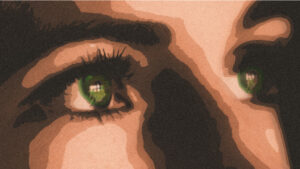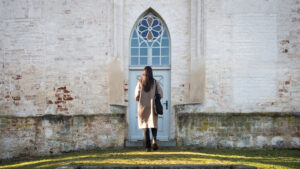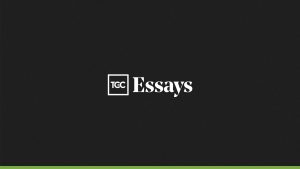When my son Tim was 11 years old, I told him I’d enrolled him in Special Olympics. “There will be kids there who have Down syndrome, just like you do.” “I don’t have Down syndrome!” Tim responded indignantly. To which I replied, “Yes . . . you do. Remember? Like your friends Annie, Jonathan, and Bradley?” Cocking his head, Tim answered, “Oh! I forgot! You’re right. I see your point!”
We, like Tim, can sometimes be confused about how disability impacts life in this world. But it’s only when we understand how Western society views disability, and how this contrasts with the Bible’s view, that we can begin to better understand the experience of disability and more effectively include people with disabilities in the church.
2 Dimensions of Disability
Disability has two aspects. The functional dimension of disability involves parts of the body that don’t work in ways we typically expect. The social dimension of disability involves how others treat those who have disabling conditions—often disabling the person more than their functional impairment. These two components create the experience we refer to as “disability.”
Modernism and Disability
When modernism dominated 20th-century, Western thought, disability was viewed as an aberration. In modernism, what matters is bettering humanity through fixing problems we can observe by relying on science and reason. In this context, disability—viewed as an observable aberration—is a “problem” that needs to be eliminated, repaired, or perfected to pursue a utopian vision.
While a modernist mindset can positively contribute helpful therapies for disabling conditions, tragically, it has also been the foundation for societal abuses against people with disabilities—abuses including euthanasia, institutionalization, sterilization, and the abortion of babies diagnosed with disabling conditions in utero. Modernism focuses, almost exclusively, on the functional dimension of disability—the impairment itself. In modernist terms, disability is viewed as an abnormal part of life in a normal world.
While a modernist mindset can positively contribute helpful therapies for disabling conditions, tragically, it has also been the foundation for societal abuses against people with disabilities.
Postmodernism and Disability
Postmodernism, however, focuses almost exclusively on disability’s social dimension. Reacting to modernism’s failures, postmodernism looks at truth as a personal, fluid entity rather than an observable, scientific reality. It points out ways science and reason alone have failed society and roots these social failures in the human struggle for power. From a postmodern perspective, what needs to be fixed is not the disabled human body but the systems at work in culture.
Disability activists in the postmodern era ask some very important questions, such as:
- Who decides what is or is not a disability?
- If social settings were fully supportive and completely accommodating of people with disabilities, would the impairment itself matter, in pragmatic terms?
In postmodern thinking, disabling conditions themselves are neutral human characteristics that need to be embraced and even celebrated. Some postmodern disability activists describe the functional impairment as no different from varying hair colors. In the postmodern view, disability is a normal part of life in a normal world. Break down the social barriers, and the essence of disability goes away.
Both the modernist and postmodern views are misguided. Modernism is honest about the difficulty associated with a disabling impairment. But by focusing on the impairment and the importance of fixing it, modernism generates an experience of “otherness” and inferiority for people with diagnosable disabilities.
Postmodernism is honest about the reality of social barriers that result in both passive and active oppression of people with disabling conditions. But by focusing on solutions rooted in acquiring and wielding social power, postmodernism often minimizes the pain and suffering that can accompany the functional aspect of disability for individuals with disabilities and their families.
Biblical Perspective on Disability
Where does the truth lie? The biblical view of disability embraces human dignity and diversity while honestly acknowledging genuine difficulty where it exists—both functionally and socially. Holding these elements in proper tension, the biblical perspective affirms that disability is a normal part of life in an abnormal world.
Disability is normal in that it’s to be expected. When we encounter disability, it shouldn’t surprise us or shock us. We live in a world wracked by the effects of the fall on humanity and on creation itself. Disability, viewed through the lens of Scripture, is a noticeable form of the brokenness and difficulty that is common to the human experience. In a disrupted world, disability’s difficulty legitimately arises from both the impairment and the sinful ways human beings can behave toward people whom they judge as fundamentally different than themselves.
The biblical perspective affirms that disability is a normal part of life in an abnormal world.
Tim’s initial response—“I don’t have Down syndrome!”—may sound like a denial of reality. But still today at age 30, Tim knows that his identity is not centered in his disability, even though having Down syndrome affects both how he experiences the world and how the world relates to him.
Tim realizes, first and foremost, that he is a person created in God’s image. And living with and caring for him these many years has taught me that the church can best honor people with disabilities when we remember that truth. People with disabilities, just like all of humanity, are both endowed with dignity and purpose and need to know Christ and his saving grace.
I pray that with a biblical perspective of disability’s functional dimension, our churches will enter into the practical difficulties that can arise from living with disabling conditions. In addition, I pray that with a biblical perspective of disability’s social dimension, our churches will actively oppose injustice toward people with disabilities, wherever it is found. When we celebrate the wonderful gifts of people with disabilities, love them as fellow image bearers, and welcome their unique perspectives on life, the entire body of Christ is blessed.
This post is an adapted excerpt from chapter 1 of Same Lake, Different Boat: Coming Alongside People Touched by Disability, revised and updated (P&R Publishing, 2020).
Try Before You Buy: FREE Sample of TGC’s New Advent Devotional
 Choosing the right Advent daily devotional can be tough when there are so many options. We want to make it easier for you by giving you a FREE sample of TGC’s brand-new Advent devotional today.
Choosing the right Advent daily devotional can be tough when there are so many options. We want to make it easier for you by giving you a FREE sample of TGC’s brand-new Advent devotional today.
Unto Us is designed to help you ponder the many meanings of this season. Written by TGC staff, it offers daily Scripture readings, reflections, and questions to ponder. We’ll send you a free sample of the first five days so you can try it out before purchasing it for yourself or your church.





























